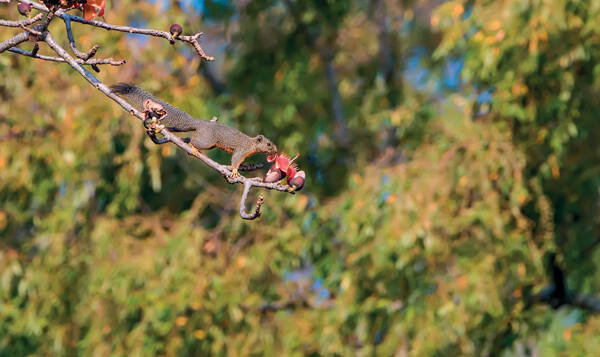Callosciurus phayrei
IUCN
LCBasic Information
Scientific classification
- name:Callosciurus phayrei
- Scientific Name:Callosciurus phayrei,Phayre”s Squirrel,Yellew-handed Squirrel,Yellow-footed squirrel, yellow-bellied squirrel, yellow squirrel, Philippine squirrel
- Outline:Rodents
- Family:Rodentia Sciuridae Sciurus
Vital signs
- length:220~260mm
- Weight:360~430g
- lifetime:
Feature
Arboreal squirrel with yellow belly and chin.
Distribution and Habitat
In China, it is only distributed in western Yunnan (Yingjiang) and its number is very small. Abroad, it is mainly distributed in Myanmar.
It lives in low-altitude tropical rainforests and bamboo and broad-leaved forests.
Appearance
The body is slightly larger than the red-bellied squirrel. The back, snout, behind the ears, top of the head, and sides of the neck are grayish brown. The abdomen is orange-yellow, and there is usually a faint black stripe on each side of the abdomen. The tail is long, the tips of the tail hairs are black, and the ventral surface of the tail is yellow. The limbs are yellow-white or light orange-yellow (bounded by the wrist joint). The salient features of the skull morphology are: the front section of the nasal bone is significantly curved downward, the width of the interorbital part is significantly larger than that of other species of squirrels in the genus Squirrel genus, and the postorbital process and zygomatic arch are relatively developed.
Details
The yellow-handed squirrel is also called the yellow-footed squirrel, yellow-bellied squirrel, yellow squirrel, and Philippine squirrel. It is slightly larger than the red-bellied squirrel. It has a narrow distribution area and a small number of species. It is a rare species.

It lives in tropical rainforests and bamboo and broadleaf mixed forests at an altitude of 260-300 meters. It lives in trees and is active at dawn and dusk. It mostly forages in trees, and its main food is flowers, fruits, and leaves of various plants.









